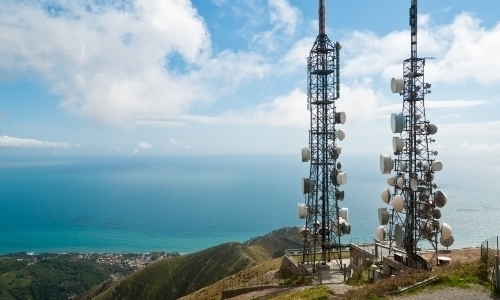8.12,21 –SSI – Scott Goldfine

The pending 3G sunset, if ignored, will leave security and fire/life-safety systems unable to wirelessly communicate to monitoring centers.
Lost for some in the commotion surrounding the COVID-19 pandemic and unprecedented disruption to installing security dealer and integrator businesses has been the looming 3G cellular communications sunset. While during the past couple of years the topic has often been emphasized by SSI and awareness (and in many cases upgrading action of alarm control panels) was on the rise through early 2020, lockdowns ran major interference for both company operations and gaining access to customer sites.
Those complications compounded the challenges of providers that were already confounded by the need to contact customers, for fear of “rocking the boat” with hassles or charges that could possibly cause them to reconsider the relationship.
This urgent issue — which ignored will leave security and fire/life-safety systems unable to wirelessly communicate potentially life-threatening situations to monitoring centers — is not going away. As further detailed in this month’s Fire Side Chat, the impending deadline for systems using AT&T’s 3G network is only about six months away on Feb. 22, 2022. Fortunately, Verizon pushed its deadline back to the end of 2022. It is essential for dealers/integrators to proactively and fully canvas, understand and take advantage of the support and solutions being offered by their suppliers and other vendors standing by to assist.
This critical transition is also among the myriad ways in which wholesale third-party central stations are hand-in-glove partners with installing dealers/integrators. In putting together SSI’s annual Monitoring Issue, I asked executives from several of the industry’s largest and best-known centrals (see roundtable here) for their perspective on this challenge and the latest in alarm signals transmission.
“We have continued our efforts to communicate clearly and proactively with our customers about changes in the industry, the 2G and 3G sunset, and new products and features. Transparent, honest communication to our customers about what to expect and what we provide has helped us to see stronger brand loyalty and higher CSAT scores.” ― Jason Chancellor, CIO, Brinks Home
“Signal transmissions have increased dramatically, which often drives more operator actions. We are actively reviewing the highest frequency signals and developing policy and technical solutions to lower the impact on operations. This will enable us to continue to provide the consistently very low queue times for the most critical alarms. We have also been leveraging and growing our PSAP services, which expedite dispatch digitally, lessen workload at the municipal level dispatch centers and provide valuable benefits for fire departments.” — Steve Mayer, Vice President of Operations and Administration, EMERgency24
“Both cellular sunsets as well as the changing nature of POTS services have both been a challenge for our dealers. Significant investment is required to update the communication paths used by panels in both time and equipment. Most of our dealers have been proactive in making plans to handle this continued shift as well as changing long-standing business practices to further prepare for future shifts.” ― Troy Iverson, Vice President, AvantGuard Monitoring
“Affiliated continues to see a significant shift from conventional, digital dialer and POTS-based systems to Internet and cellular communications. As the availability and quality of conventional, copper-based POTS lines continues to decrease, we continue to support our partners during this transition through our relationships with all the major cellular carriers, and by providing an inexpensive dial capture solution to quickly convert legacy panels to LTE-M cellular. We see this as a positive opportunity for partners to re-engage with their customers and to use the enhanced capabilities offered by new communication technologies to bring new service to their customers while increasing their RMR.” ― Daniel Oppenheim, CEO Affiliated Monitoring
“For monitoring centers, the shift in technology also represents a shift in the expertise required and continual large investments in technology. For instance, for decades monitoring station communication technology essentially consisted of four main components: phone lines, alarm receiver hardware, monitoring software platforms and telephone systems. Today, the landscape is dramatically more complex; the upsurge of IP-based alarm communications and real-time user connectivity from both dealers and subscribers demands have been catalysts forcing even the most experienced monitoring providers to re-evaluate the way they look at systems reliability, bandwidth, data security and user accessibility.” ― Jim McMullen, President, COPS Monitoring
